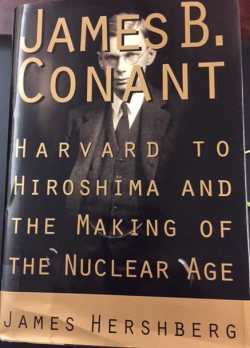The Care and Feeding of Ideas: A Guide to Encouraging Creativity

Buy online ($)
Type
Book
Authors
ISBN 10
0201101602
ISBN 13
9780201101607
Category
Unknown
[ Browse Items ]
Publication Year
1987
Publisher
Addison-Wesley, United States
Pages
238
Subject
Creative thinking. Change (Psychology). Problem solving.
Abstract
Good ideas are not easy to cultivate. They need rich soil, attention, and encouragement to take root and grow. Jim Adams’s classic Conceptual Blockbusting was a handbook to weeding your garden, to clearing your mind of rubbish that stifles creative thought. The Care and Feeding of Ideas is its long-awaited sequel, a guide to creating a greenhouse environment in which ideas can thrive.If you’re serious about encouraging creativity”, writes Adams, you need to understand the entire creative process-from concept to reality.” You need to understand thinking-the mysteries and mechanics of creative thought. You need to understand doing-the actions you can take to increase your creativity. Only by becoming aware of how you conceptualize, and of the techniques that lead to better problem solving, can you begin to bring forth your very best ideas.Adams leads a tour through the unconscious mind, the brain and nervous system, and the storehouse of memory, and points out how they work (and conspire against us) when we tackle problems. He shows that bad problem-solving habits can be broken, that money and time are your muse’s best friends, that creativity involves risk but the risk is worth it, and that the stereo you bought with your last bonus was not a luxury but a necessary reward. He illustrates his arguments with ingenious games and exercises that will surpirse you with what they reveal about your patterns of thought. Whether you’re a midnight novelist or a managment consultant, a Sunday painter or a city planner, this book can forever change the way you approach creative challenges. - from Amazon
Description
pt. 1. Thinking -- Introduction to creativity and change -- Some thoughts about thinking -- The machinery of thinking -- Habits and problem solving -- Memory, boxes of information -- pt. 2. Specialization as a problem-solving resource -- Overcoming ruts and boxes -- Time, money and creativity -- Emotion, risks and problem solving -- Rewards, the necessary pot of gold -- Pulling together, organizing for creativity -- Decision making and strategy -- Where do we go from here?
Biblio Notes
Includes bibliographical references (pages 212-218) and index.
Number of Copies
1
| Library | Accession No | Call No | Copy No | Edition | Location | Availability |
|---|---|---|---|---|---|---|
| Main | 55 |
Folio BF408 .A3 1986 |
1 | Yes |




